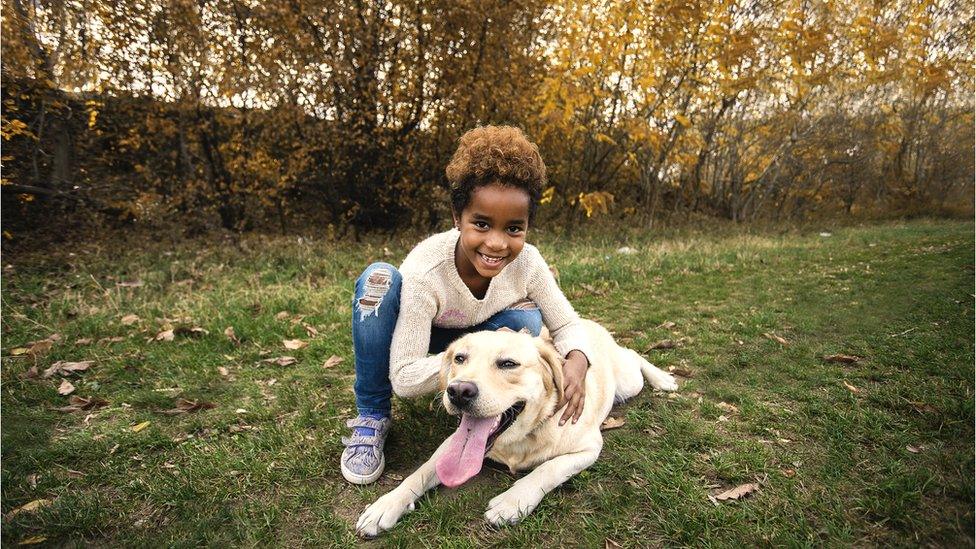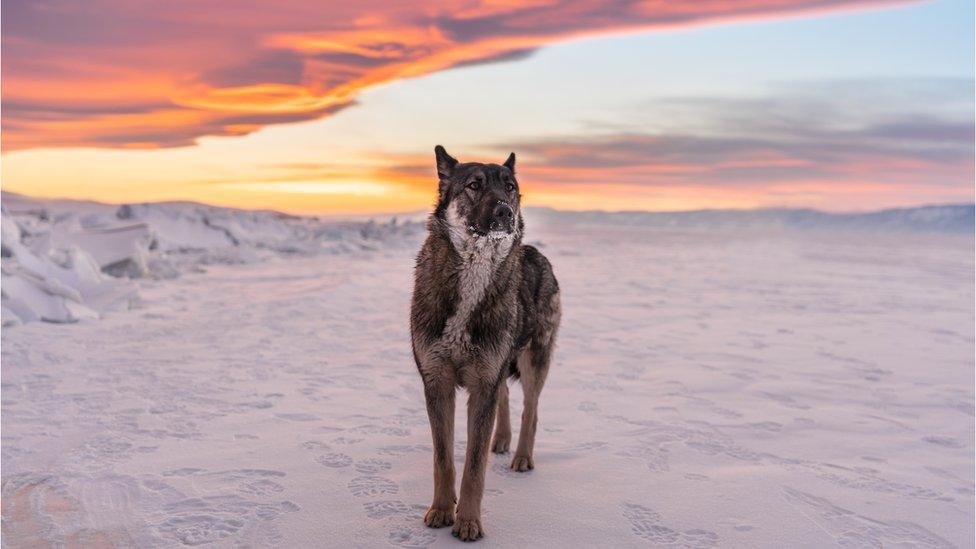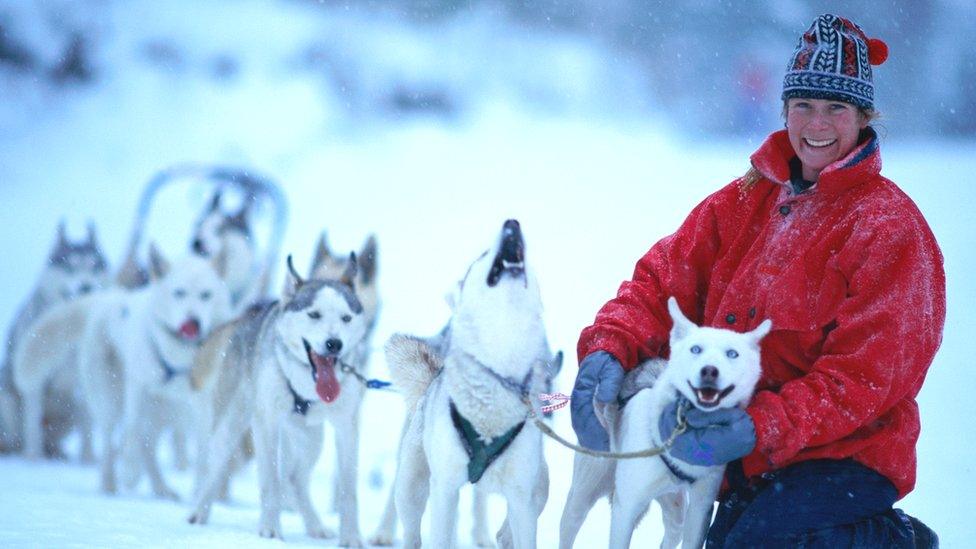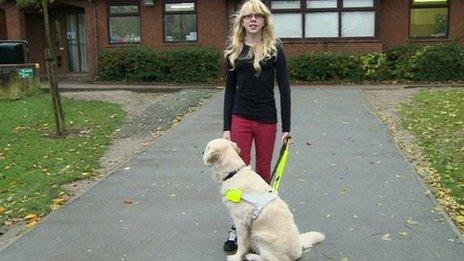Pet dogs 'originated from wolves in ice age Siberia'
- Published
- comments

When did pets and humans first start working together?
Have you ever wondered when dogs and humans first buddied up to live and work together?
Well, scientists tracking the relationship between humans and dogs back through time think our pets may have originated from wolves in ice age Siberia.
Until now, scientists only knew that dogs had evolved out of a wolf population somewhere in Asia or Europe - but new research has now pinpointed the specific region where that occurred and even the approximate date that the transformation took place.
A combination of DNA and archaeological evidence has revealed that every spaniel, Alsatian, sausage dog and Labrador (and every other type of dog in the world!) originated as grey wolves in eastern Siberia - what's now Russia - in around 21,000 BC.
And, the authors think that their initial relationships with humans grew entirely due to natural causes.
How climate change played a part

A wolf on frozen Lake Baikal in southern Siberia, Russia
The research - using archaeological DNA studies - has just been published in a special scientific journal called the US Proceedings of the National Academy of Sciences (PNAS).
The new investigation suggests that the relationship between humans and dogs was at first due to climate change.
During the last ice age (around 21,000 to 17,000 BC), temperatures dropped so much in Siberia that the numbers of the wolf's prey (animals like reindeer and bison) dropped dramatically.
So wolves began to scavenge around human camps - looking for leftover food, and so the relationship began.
Dog and human histories are completely intertwined. Dog evolution developed in parallel with our human story and that is clearly demonstrated around the world,
Once the wolves found this food source they would have instinctively begun keeping other wolves and predators away.
As the process continued the wolves gradually lost their hunting skills and become increasingly dependent on humans for their food.
DNA changes

Like guide dogs today, dogs and humans have lived and worked together for thousands of years
The report claims that after many generations, their DNA begins to show a difference to other groups of wolves with other different skills - as these Siberian grey wolves descendants gradually evolved into the first dogs.
"Dog domestication, occurring in Siberia, answers many of the questions we've always had about the origins of the human-dog relationship," said Durham University archaeologist Dr Angela Perri.
Team work

When humans and dogs worked together they could cover large distances
By 13,000 BC dogs were going with humans wherever they migrated - archaeologists have found that the first people to come to the Americas, more than 15,000 years ago from north-east Asia, were accompanied by their dogs to help them explore the new land around them.
In fact it's possible that first relationship with dogs allowed humans to train them to pull sleds, which may have allowed humanity's fast expansion in North America at around that time.
The dogs that accompanied them as they entered this completely new world may have been as much a part of their cultural repertoire as the stone tools they carried
- Published3 July 2019
- Published8 January 2019

- Published23 November 2011

